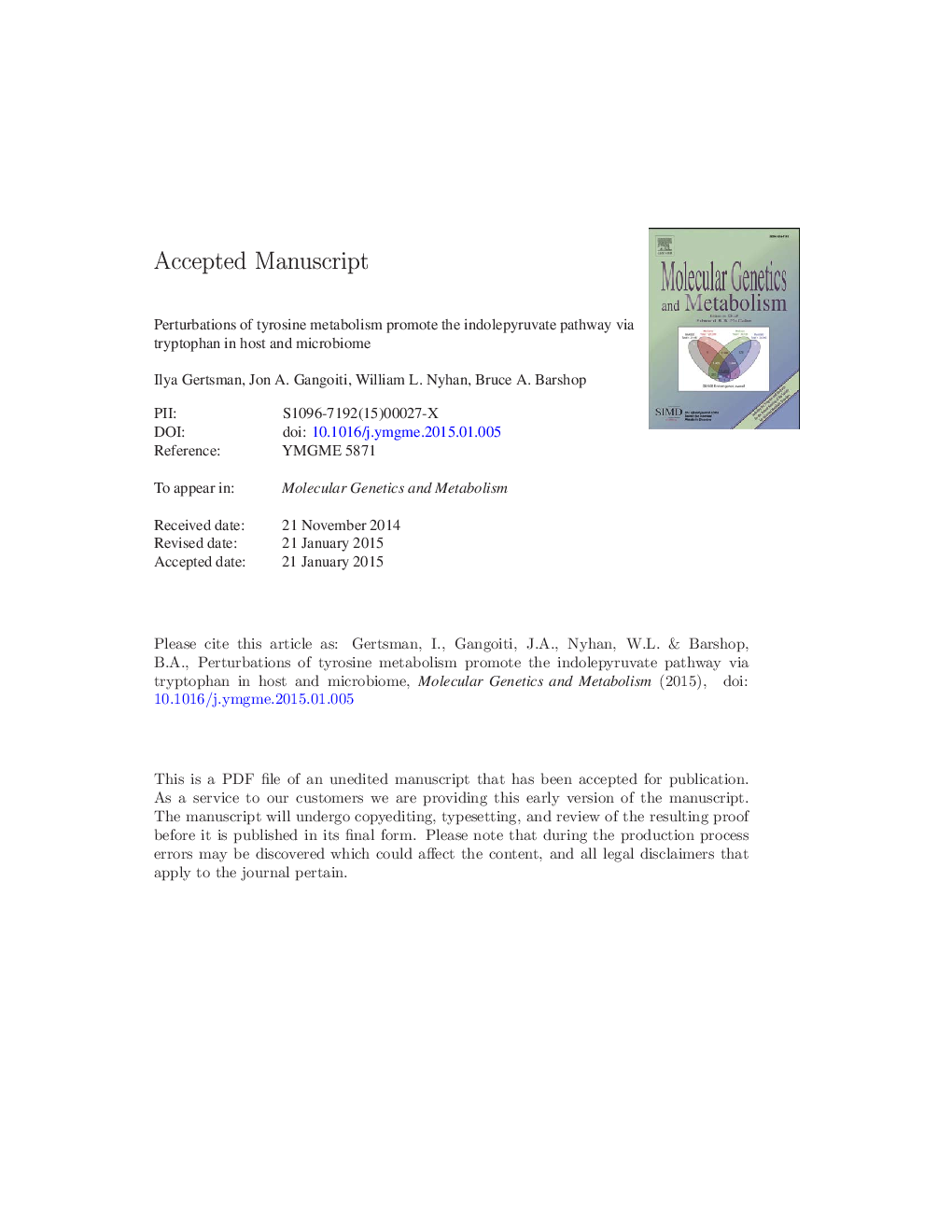| Article ID | Journal | Published Year | Pages | File Type |
|---|---|---|---|---|
| 10833148 | Molecular Genetics and Metabolism | 2015 | 27 Pages |
Abstract
The drug nitisinone (NTBC) is used to treat tyrosinemia type I, and more recently has been also used for the treatment of another disorder of tyrosine metabolism, alkaptonuria. While studying the dose effects of NTBC treatment on alkaptonuria, untargeted metabolomics revealed perturbations in a completely separate pathway, that of tryptophan metabolism. Significant elevations in several indolic compounds associated with the indolepyruvate pathway of tryptophan metabolism were present in NTBC-treated patient sera and correlated with elevations of an intermediate of tyrosine metabolism. Indolic compounds of this pathway have long been associated with commensal bacterial and plant metabolism. These exogenous sources of indoles have been more recently implicated in affecting mammalian cell function and disease. We studied the correlation of these indolic compounds in other disorders of tyrosine metabolism including tyrosinemia types I and II as well as transient tyrosinemia, and demonstrated that 4-hydroxyphenylpyruvate (4-HPP) was directly responsible for the promotion of this pathway. We then investigated the regulation of the indolepyruvate pathway and the role of 4-HPP further in both mammalian cells and intestinal microbial cultures. We demonstrated that several of the indolic products, including indolepyruvate and indolelactate, were in fact generated by human cell metabolism, while the downstream indole metabolite, indolecarboxaldehyde, was produced exclusively by microbial cultures of human gut flora. This study describes a symbiotic perturbation in host and microbiome tryptophan metabolism in response to elevations related to defects of tyrosine metabolism and concomitant drug treatment.
Keywords
Related Topics
Life Sciences
Biochemistry, Genetics and Molecular Biology
Biochemistry
Authors
Ilya Gertsman, Jon A. Gangoiti, William L. Nyhan, Bruce A. Barshop,
